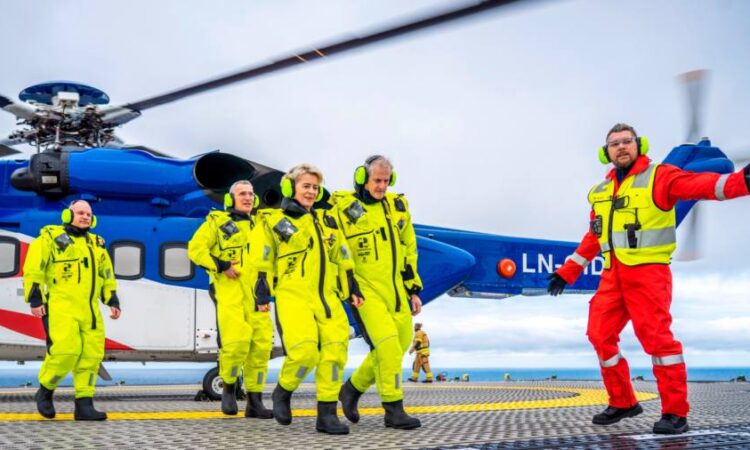
The helicopter carrying the heads of Nato and the European Commission flew in thick cloud off the Norwegian coast, right until it reached the Troll gas platform when the sky brightened up almost miraculously.
Troll, Norway’s largest gasfield, has certainly proved its worth to Europe in recent months, providing about 10 per cent of the gas needs of the continent, including the UK. Ursula von der Leyen, president of the commission, and Nato secretary-general Jens Stoltenberg came as much to thank Norway for increasing the flow of gas to get through a difficult winter as send a message to Russia not to try to sabotage any North Sea infrastructure.
The hosts on the platform — Norwegian prime minister Jonas Gahr Støre, and Equinor chief executive Anders Opedal — were all smiles as they took their two guests 300 metres below sea level to the bottom of one of the platform shafts. But behind the bonhomie, there are also big differences in emphasis on what the energy future might look like.
Since the start of the Ukraine war, Norway has displaced Russia as Europe’s biggest source of gas. Along with its main oil and gas group, state-controlled Equinor, Norway has argued increasingly that it is the democratic supplier of choice to the continent. For years, it had sought to position itself as being able to deliver barrels of oil with one of the lowest carbon footprints in the world (if that is not an oxymoron). Now, it has hit on this new argument to stand out from more autocratic suppliers such as Qatar and Saudi Arabia.
“It’s a reality, it speaks for itself,” said Støre as the North Sea wind buffeted the platform, pointing to figures showing Norway now supplies 30 to 40 per cent of Europe’s gas. “Norway is a Nato ally, a democratic partner and that brings stability and predictability both to Europe and the UK.”
Equinor may be investing in wind power and other green technology, but it also sees a decent future for gas and oil. Opedal pointedly said on the platform that Troll would continue producing beyond 2050, which is the target date for the EU to be carbon neutral.
Oil and gas exploration in Norway continues almost unabated despite a government agreement with a small leftwing party to not open up any new areas during this parliamentary term. In January, Oslo offered a record number of blocks in existing areas in the Arctic for companies to explore.
Europe is grateful in the short term for Norway’s increased gas production in the past year. Von der Leyen repeatedly gave thanks to “our friends” in Norway while on the platform. But the EU’s overarching current goal is to achieve net zero emissions and so it wants to accelerate its push towards green technologies, putting an emphasis on the likes of wind power and hydrogen rather than gas in the mid to long term. “Of course, the future is renewables,” said von der Leyen.
That leads to some tensions in the discussions. People involved in negotiations between Norway and Europe say the EU appears reluctant to commit to large gas volumes for a long period. Norway would ideally also like to get an EU imprimatur for its aggressive petroleum plans in the Arctic, recognising that now might be its time of maximum leverage given Europe’s thirst for gas.
Støre is keen to present a different side of Norway, too. His government speaks warmly about offshore wind, even though Norway hugely lags behind other North Sea countries such as the UK and Denmark on this.
He also talks up the prospects for carbon capture and storage. An early Norwegian attempt at this failed. But several efforts including one involving Equinor in the North Sea are now taking place. Finally, Norway is pushing hydrogen. Eventually, it will be so-called green hydrogen made using renewable energy. But, before that, Oslo is heavily backing blue hydrogen where gas is used and the carbon captured and stored.
“All that will be the future; gas is the transition technology,” said Støre. Within a few years, he added that it might be possible to spy offshore wind farms within a kilometre or two of Troll while carbon might be injected into the seabed a similar distance away.
But standing on a platform that still earns about $80mn a day at current gas prices, there is a sense that Norway has little incentive to turn its back prematurely on the industry that made it rich, even as interest in green energy rises. There is little doubt that this sector will stay lucrative in the short run but questions abound over whether Norway is moving fast enough for its longer-term future.
Twitter: @rmilneNordic
Email: richard.milne@ft.com






